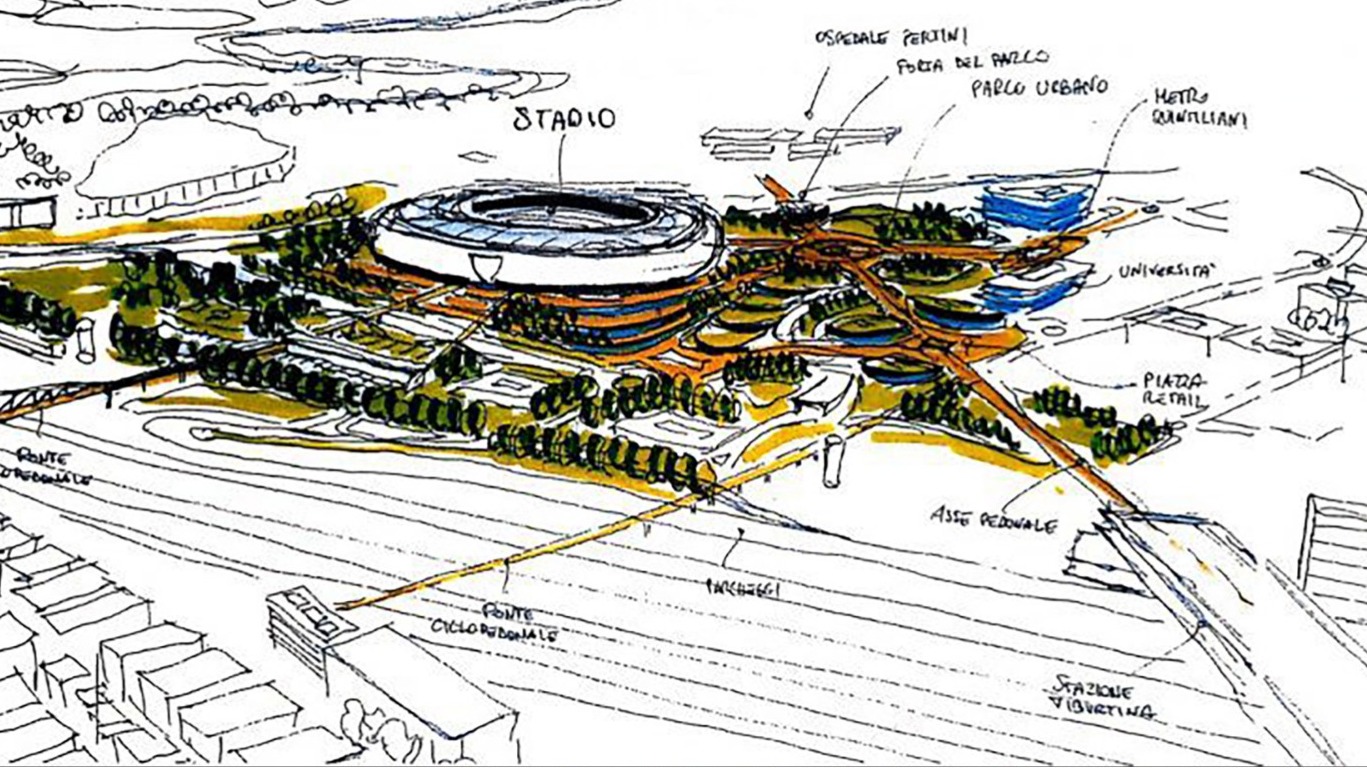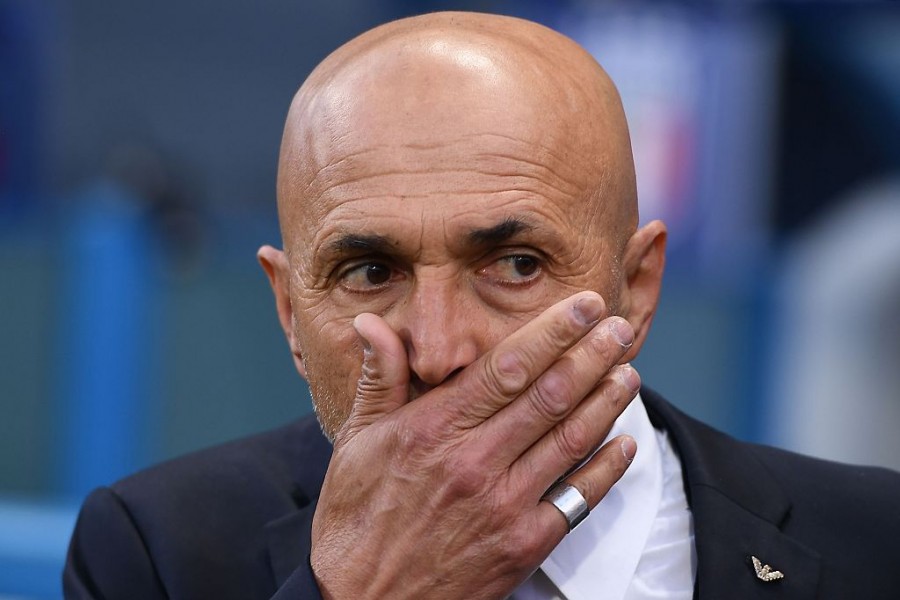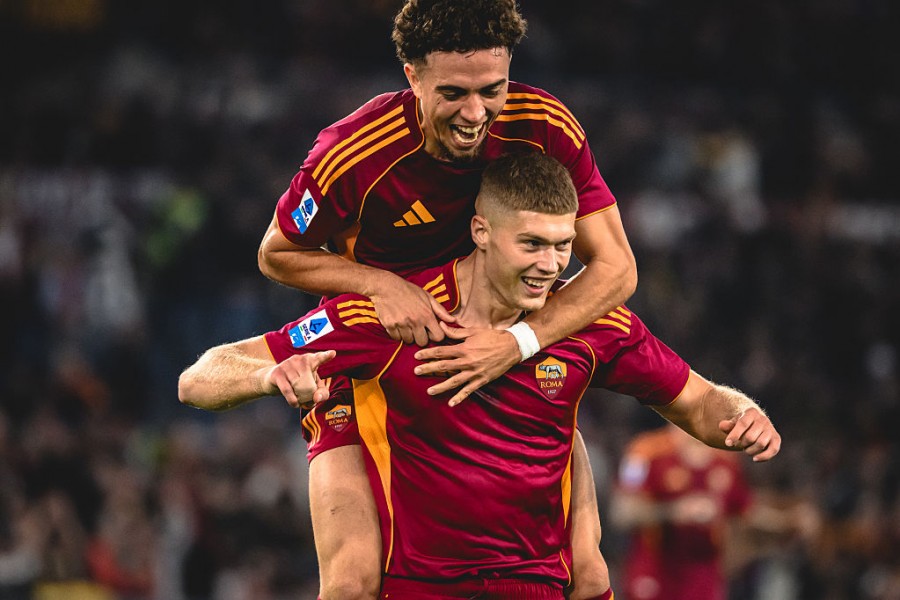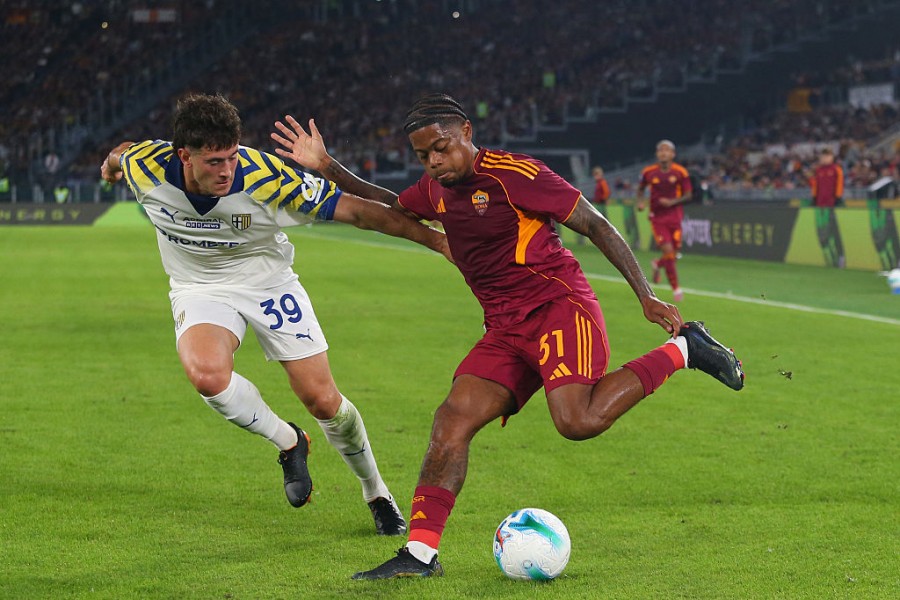As Roma's new stadium: the goal is set for 2027
A crucial step in the process for the new building was made. The club delivered the feasibility study to the Capitol. It will have 60-65 thousand seats

A draft of the new Roma stadium in Pietralata
Finally, as predicted by our newspaper itself, the feasibility study on the area identified by Roma (and suggested by the City Council) for the construction of the club's new stadium was delivered. A crucial step, which required the maximum commitment of the men of the Giallorossi club and the technicians of the Capitol. It was a critical day for the realization of the project that the Friedkin family has in mind for Roma. The steady growth on the sporting level for Roma is now visible with the Conference League victory, and now also clearly visible on the corporate level. The Roma delegation, led by Ceo Pietro Berardi and also composed of General Council Lorenzo Vitali (the man who is following the dossier together with the Ceo) and Lucia Bernabè, a special consultant precisely for the stadium issue, was received in the late morning by Mayor Roberto Gualtieri, accompanied by City Planning Councillor Maurizio Veloccia.
In Berardi's hands was a box that testified to the body of the study presented. Which, it should be clarified once again, is not the project in the strict sense, but is "the systematic analysis and evaluation of the characteristics, costs and possible results of a project on the basis of a preliminary rough idea." There were no sketches or models, as was the case in the past for Tor di Valle's project. This created a rise in discontinuity from these early stages. And indeed discontinuity there is, and it is above all in content, not only in form. Because this new project sees the stadium not at the center of a more complex urban and social redevelopment, as it would have been for the former hippodrome area. Here the stadium is the project, without anything else. Or rather without anything else that is not functional for the facility. It has no offices, as has always been known. However, it has no commercial centers around the facility either, and this is a substantial novelty. The development will be accompanied only by accommodations for "food and beverage," food and beverages for those who chew better Italian, and a park in which as many as 3,000 new trees will be planted. Redevelopment is evident here, but not for the benefit of Roma and its ownership, as much as, if not most importantly, for the community. This is a principle of solidarity with the community which is already dear to Roma in numerous other initiatives. So the stadium is it, and there is nothing else. Even still, there would not have been a planned museum area, to be dedicated to the old glories, the Hall Of Fame, or the many memorabilia that even in Trigoria for some time are (finally) collected, cataloged and preserved. This aspect is being considered by the club, and therefore a decision in this sense has not yet been made.
Otherwise, the many rumors that have emerged in recent weeks have been confirmed. One such rumor confirmed concerns the capacity. Roma was initially leaning toward a 50- or 55,000-seat stadium. But the impetus given by the ownership toward a greater proximity of the public to the team, through a care of the fanbase new to these latitudes, and a pricing policy aimed at facilitating mass attendance, have forced a new evaluation. Following this, it was decided to build a facility that starts from a base of about 60 thousand seats, but can easily be extended to 65 thousand. Thus, it creates a facility whose capacity can be modulated according to needs and events. The study also showed how one of the company's intentions, is to allow public transportation to and from the stadium, taking advantage of the 4 nearby subway stops and the Tiburtina train station, for which an important interlocution with Ferrovie dello Stato is already underway.
The company's goal is to lay the foundation stone within a couple of years to arrive at the inauguration of the facility in the club's centennial year. This is not a prediction, but a focus on which to build the work of the coming months and direct the efforts of the men who will oversee the project. Thus 2027 is seen as a horizon, not as dogma. This is also the case because previous experience teaches that caution is never too much when dealing with public administration. And the next steps will show just how much the municipality cares about this undertaking. Meanwhile, there are 90 days to give a formal response to the feasibility study. A response that will go through a Preliminary Services Conference, which the mayor has announced he will convene soon. Then there is the actual project, followed by the deliberation of the public interest, followed by the Decisional Conference, and finally the public utility, which is the actual green light to build. It is a clear path, on which it seems that Dan and Ryan Friedkin, who would be personally involved in the design of the stadium, are putting their hands directly on. This aspect, however, has the utmost secrecy, to the point that only Mayor Gualtieri has seen some sketches in a highly confidential form.
© RIPRODUZIONE RISERVATA



 PRECEDENTE
PRECEDENTE




